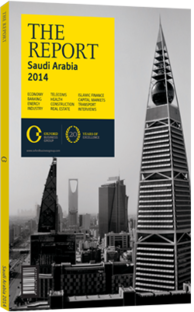Key alternatives: Setting ambitious targets to diversify energy sources
The Kingdom has pledged to generate 55 GW of power from renewables by 2032, including 41 GW from solar. It has huge hydrocarbons wealth to devote to the project and sound reasons to diversify the country’s sources of fuel for power generation, but meeting the target will likely be a challenge.
GENERATION CAPACITY: BP’s “Statistical Review of World Energy” for 2014 shows that the US was the world’s biggest consumer of renewables in 2013. It consumed a total of 58.6m tonnes of oil equivalent (toe) from wind farms and solar power plants and installations. China was the second-largest consumer of renewables with 42.9m toe, followed by Germany with 29.7m toe and Spain with 16.8m toe.
The most recent figures for the US’s renewable energy generation sector shows how that 58.6m-tonne figure was achieved and how the situation has developed since. By March 2014, 440,000 individual solar photovoltaic (PV) installations across the US were producing a total of 12.1 GW, and its concentrated solar power (CSP) plants added another 918 MW. Renewable Energy World reports that the solar PV capacity had increased by 40% in 2013 to around 8.6 GW at the start of that year, while CSP capacity grew 80% in 2013 from 510 MW. In effect, US solar generation capacity at the time of BP’s survey would have been 9 GW.
Worldwide wind farm installations produced about 35 GW in 2013. If Saudi Arabia were to replicate the US’s entire solar generation, plus all the energy produced by wind farms globally, in just seven years, it would still only produce 44 GW from renewables, 11 GW short of its 2032 target. It would seem to be a considerable challenge therefore, except that there is a precedent of sorts. A nine-month period in 2012-13 shows what a dramatic difference government incentives can make. According to Renewable Energy World, in the fourth quarter of 2012 the US built 8.38 GW of wind turbines, while in the first quarter of 2013 it added 0.0016 GW and in the second quarter it added zero. The removal of government subsidies caused a 92% drop in newly installed wind capacity. The Kingdom has said it hopes to attract $109bn in investment in solar to achieve its aims.
COOPERATION: The King Abdullah City for Atomic and Renewable Energy (KACARE) is devising Saudi Arabia’s strategy, and in July 2013 it announced it was building a network of 70 stations to measure the country’s ability to generate electricity from the sun, wind, geothermal and waste sources. In December 2013 KACARE published the Saudi Renewable Resource Atlas to provide existing data for companies considering PV or CSP projects. In January 2014 KACARE announced it had signed a collaboration agreement with Germany’s Fraunhofer Institute for Solar Energy Systems to cover research and development as well as testing and training. In February 2014 Saudi Arabia’s government struck a deal with California’s SunEdison to build a $6.4bn PV solar power component factory for the Kingdom. According to Ziad Mortaja, the country president of Schneider Electric in Saudi Arabia, “The Kingdom has many of the inputs to develop a strong solar industry, but this will require less bureaucracy in the decision-making process and a more focused strategy.”
INVESTMENT: In January 2014 the Saudi Electricity Company called for initial expressions of interest to build the country’s first integrated solar combined-cycle plant at Duba near Tabuk. The 550-MW plant would burn gas and use Arabian Super Light as a backup fuel, but CSP technology would be used to drive power generation turbines. The Saline Water Conversion Corporation is working with King Abdullah University of Science and Technology to build a pilot desalination plant capable of producing 30,000 cu metres of water a day using power from a 45,000-KWh-per-day PV plant.
The solar energy agenda has caught the imagination of potential investors, but many are waiting for clarification from KACARE on power purchase agreements or feed-in incentives to assess the commercial viability of potential tenders. Without the right formula, renewable investment in Saudi Arabia could face the same problems as wind generation did in the US.
You have reached the limit of premium articles you can view for free.
Choose from the options below to purchase print or digital editions of our Reports. You can also purchase a website subscription giving you unlimited access to all of our Reports online for 12 months.
If you have already purchased this Report or have a website subscription, please login to continue.

